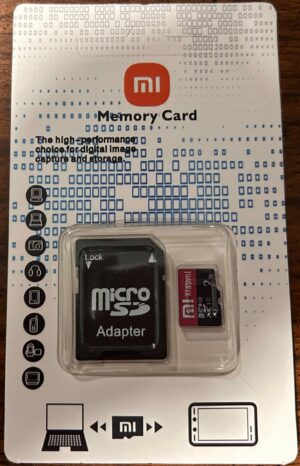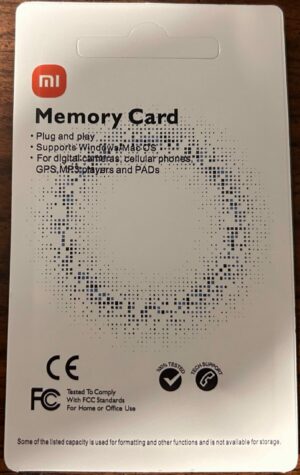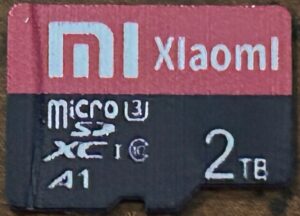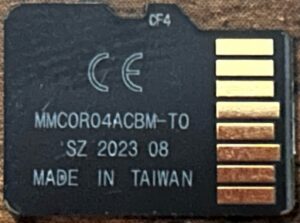- Obtained from: AliExpress
- Price paid: $5.89
- Advertised capacity: 2TB
- Logical capacity: 2,147,483,648,000 bytes
- Physical capacity: 4,010,738,176 bytes
- Fake/skimpy flash: Fake flash
- Protected area: 0 bytes
- Speed class markings: Class 10, U3, A1
- CID data:
- Manufacturer ID:
0x00 - OEM ID:
0x0000 - Product name:
0x0000000000 - Product revision:
0x00 - Serial number:
0x00000ee2 - Manufacture date: Aug 2023
- Manufacturer ID:
- Sequential read speed (MB/sec): 21.33
- Sequential write speed (MB/sec): 10.29
- Random read speed (IOPS/sec): 655.33
- Random write speed (IOPS/sec): 1.94
- Read/write cycles to first error: 49
- Read/write cycles to complete failure: Not yet determined
- Total days to complete failure: Not yet determined
- Card reader used: JJS CR-UTC4AC
- Package front:

- Package back:

- Card front:

- Card back:

Discussion
Once again, this is a card I purchased — along with the smaller 16GB sibling — to see if I could find fake flash and genuine flash, and to have some knockoff cards in my results. While I didn’t expect the 16GB version to be fake flash, I did expect the 2TB to be fake. Admittedly, however, I was a little surprised to see that they were both 4GB — but perhaps I should have expected that. Surprisingly, this earned it two titles: highest price per gigabyte (at $1.469 per gigabyte), and skimpiest card (offering just 0.2% of the advertised capacity).
Performance-wise, sequential read and write scores were more than one standard deviation below average. However, when compared to the other knockoff cards in my collection, they were pretty close to average. Random read/write speeds were below average as well, even when compared to the other knockoff cards. Performance was good enough to meet the qualifications for the Class 10 mark, but not good enough for the U3 or A1 marks. I’ll throw in my standard “perhaps it would have done better under the right testing conditions” disclaimer — but I highly doubt it would have made a difference.
Endurance tests for this card are still ongoing. The card experienced a 15MB-wide data verification error during round 50; I don’t know exactly where on the card these errors took place, because the version of my program that I was running at the time didn’t log this information. Curiously, however, the sectors in question here will generally verify correctly on subsequent rounds of testing; but every few rounds, they will again fail to verify correctly, then go back to being “good” on the next round. The number of rounds between this happening seems to be variable. I’m not sure what to make of this — if this were an artifact of wear leveling, I’d expect the “bad” sectors to reappear elsewhere on the card, which they don’t seem to do. The fact that the reappear in the same place every time might be an artifact of the fact that I’m writing to the entire user area of the card. It’s still chugging along, however — it has survived 17,968 read/write cycles so far, and the total number of sectors flagged as “bad” is currently hovering just over the 1% mark.
June 15, 2024 (current number of read/write cycles is updated automatically every hour)

